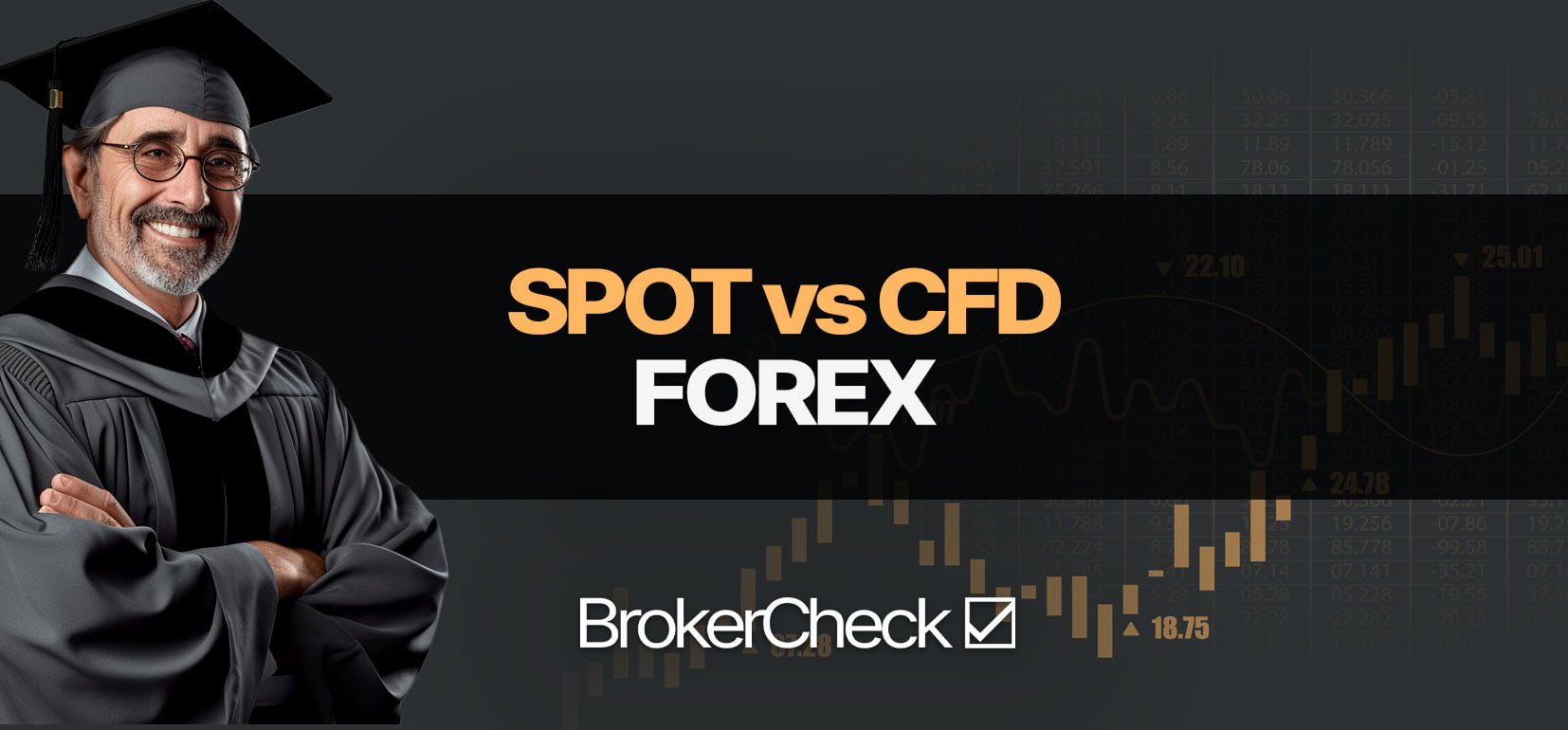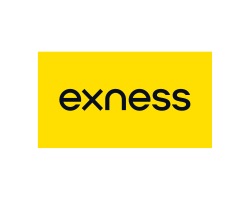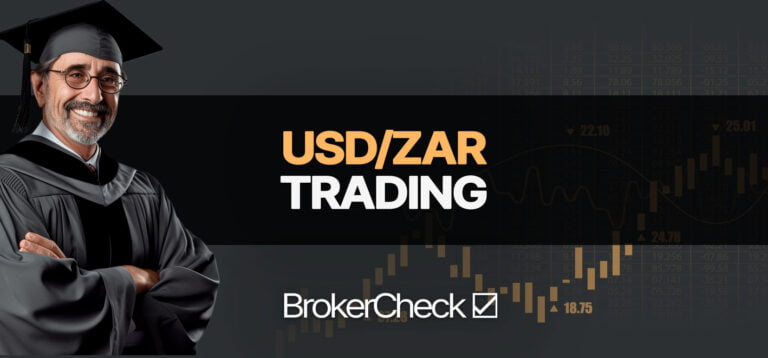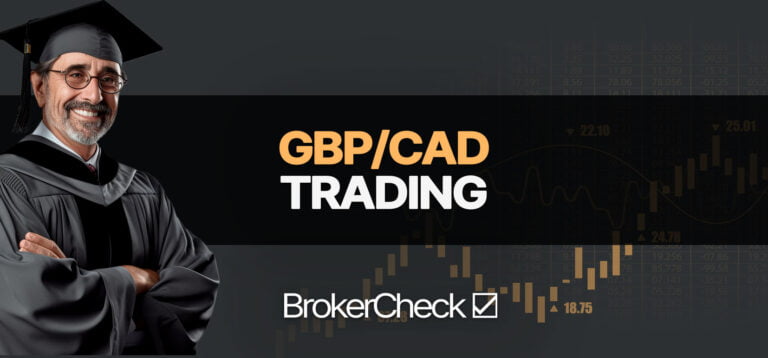1. Understanding Spot Forex and CFD Forex
The distinction between Spot Forex and CFD Forex is often a topic of intense debate among traders. Examining each closely, Spot Forex involves the physical exchange of currency pairs on the spot or within a short time frame. Factors such as country’s economic stability, geopolitical risks, and macroeconomic developments have a profound impact on the fluctuations of a Spot Forex market, presenting both opportunities and uncertainties for traders.
Turning attention to CFD Forex, these are derivative products, which means traders speculate on the price movements of currency pairs, without actually owning the underlying asset. A critical aspect is that CFD Forex allows traders to amplify their exposure to market movements through leverage, making it possible to achieve higher profits or losses.
Differences are eminent not only in the methodology but also in the trading experience. In Spot Forex trading, transaction costs are often embedded in the price via bid/ask spreads, while in CFD Forex trading, brokers may charge a commission fee.
Highlighting some accessibility factors, Spot Forex markets operate 24 hours for 5.5 days a week, while CFD Forex can potentially offer more flexible market hours, including on weekends, depending on the broker’s services. However, the edge of volatility often goes to Spot Forex due to its direct engagement with the actual currency markets.
Leverage, the ability to control large amounts of a security with a small investment, is another characteristic that distinguishes the two. With leverage being more widely available in CFDs, some traders might choose CFD Forex for its potential to magnify profits, albeit with a higher risk factor.
Navigating the subtleties between Spot Forex and CFD Forex provides discerning traders a deeper understanding of the Foreign Exchange Market, enabling them to choose wisely based on their risk appetite, investment strategy, and trading objectives.
1.1. Spot Forex Explained
Spot Forex, also known as Foreign Exchange Spot, is an agreement between two parties to purchase one currency against selling another currency at an agreed price. The transaction occurs ‘on the spot,’ meaning delivery and settlement of the contract take place immediately, or at least within a short timeframe, usually not exceeding two business days. The immediate transaction differentiates Spot Forex from most types of futures trading where the delivery date may be weeks, months, or even years in the future. The primary currency traded spot is the US dollar, and the most common pairs are known as the majors, which include Euro/US Dollar, US Dollar/Japanese Yen, Great Britain Pound/US Dollar, and US Dollar/Swiss Franc. Spot Forex holds a significant place in the currency market, with its convenient transaction procedures and prompt delivery, making it a choice trading option for many financial market participants.
1.2. CFD Forex Explained
CFD Forex – an abbreviation for Contract for Difference – is a unique approach to the traditional Forex trading. Spanning a broad range of financial markets, this trading method is underpinned by contracts which are set up between the buyer and the seller. It’s a speculative strategy, where the focus is not on the actual purchase of currency, but instead on the agreement to exchange the difference in the value of a currency pair between the time the contract is opened and the time it is closed.
In essence, CFD Forex trading operates around predictions on whether the value of a currency pair will rise or fall. If a trader believes the value will increase, they go long or ‘buy’ and if they predict a decrease, they go short or ‘sell’. The major attraction is in the leveraging offered; small margin requirements mean traders have the ability to achieve sizable profits or losses with a relatively small amount of capital. This, teamed with the vast range of markets accessible and the ability to trade on both rising and falling markets, makes CFD Forex a popular choice among traders.
However, the risk involved in CFD trading cannot be overlooked. The leveraging that offers high potential returns also incurs equally significant losses if the market doesn’t move in the predicted direction. This could lead to traders losing more than the initial deposit. Therefore, while CFD Forex offers more flexibility and potential for high returns, it invariably comes with a higher risk factor. Performance is likely to be influenced by factors such as changes in interest rates, inflation and political events. It presents the need for careful consideration of market trends and effective risk management strategies.
Contrasting this with Spot Forex, where transactions are done instantly or ‘on the spot’ and trading currency pairs involves directly buying one currency and selling another. It has its own advantages like high liquidity and 24-hour trading, but lacks the wider market access and leveraging provided by CFD Forex. It is clear that each mode of trading carries with it specific benefits and risks, depending on individual trading styles, risk tolerance, and market understanding. It is essential for traders to consider these aspects in-depth before deciding on the best trading method.
2. Essential Differences between Spot Forex and CFD Forex
In the realm of forex trading, two of the most prominent trading options are Spot Forex and CFD Forex. They differ in various aspects, including how they operate, their trading times, and the aspects of risk involved. In Spot Forex, a trader purchases or sells currency pairs at their current market price. This transaction is completed “on the spot”, hence the term “spot forex.” This trading option delivers ownership of currencies straight to the trader without delay, providing a higher risk because of the immediate nature of such transactions.
CFD Forex, on the other hand, allows traders to speculate on the rising or falling prices of rapidly changing foreign exchange markets. It stands for Contract for Difference and is essentially a contract between the client and the broker. Instead of delivering ownership, CFDs deliver the price difference between the opening and closing trades of a currency pair. This method of forex trading allows larger flexibility as traders can make profits from both up and down movements, but with the downside of an increased risk from amplified price movements.
Trading hours become a noteworthy difference between the two as well. Spot Forex trades for 24 hours continually, allowing the freedom to organize trading activities at any time. However, CFD Forex generally operates within a set trading window, determined by the brokerages’ operational hours.
Another significant discrepancy lies in their particular risks. Because of its direct nature, Spot Forex holds more risk, especially to the traders unfamiliar with quick-changing market conditions. In contrast, CFD Forex, while offering more flexibility, attracts increased risk due to managing amplified price movements. However, it harbors the possibility for traders to hedge against potential losses by diversifying their trading portfolio.
Each trading option carries both its unique advantages and limitations. Opting between Spot Forex or CFD Forex dials down to a trader’s strategy, risk tolerance, and individual trading objectives. Traders thereby must make a well-informed decision by adequately understanding their position and the specific features offered by both options.
2.1. Pricing and Liquidity
In the realm of Forex trading, understanding the principle of pricing and liquidity is paramount. Spot Forex, being the interbank market, boasts a high level of flexibility, with rates constantly fluctuating due to market dynamics. These rates, determined by an extensive network of banks across the globe, are a true reflection of the supply and demand of currency pairs. Consequently, liquidity in the spot Forex market is notably high, contributing to rapid execution of trades.
Switching the lens to Forex CFD, the story unfolds differently. Unlike Spot Forex, Forex CFD prices are not determined directly by the banks but by brokers. While this implies an element of price manipulation, brokers still strive to mirror the prices of the underlying market, thereby maintaining competitive rates. Liquidity, however, is markedly indifferent, broker-dependent, and influenced by the broker’s connection to liquidity providers.
Straddling both markets compels traders to scrutinize pricing transparency and liquidity patterns diligently. For transparent, real-time pricing, Spot Forex remains unrivaled. But for those seeking manageable entry points into trading, Forex CFD brokers often provide micro and mini lots. This flexibility, coupled with the benefit of trade leverage offered by some brokers, can prove beneficial for certain trading strategies. Thus, pricing and liquidity discernment is of utmost necessity considering each trader’s individual goals and risk tolerance.
2.2. Leverage and Margin
Leverage and margins in the trading world play a pivotal role, with differences noticeable when comparing Spot Forex and CFD Forex. Spot Forex often necessitates traders to trade at full contract size. This forces traders to allocate a substantial amount of their portfolio to a single trade, thereby limiting their exposure to different assets. Conversely, in the realm of CFD Forex, the concept of leverage comes into heavy play. Leverage allows traders input minimal capital, known as margin, and yet control a substantial amount of the underlying asset. This magnifies the potential gains, while simultaneously increasing the risk of substantial losses owing to market fluctuations.
Leverage in Forex trading is a double-edged sword. It presents opportunities for traders with smaller portfolios to participate in larger trade volumes, but concurrently exposes them to higher risks. Spot Forex doesn’t offer quite the same amount of leverage as that of CFD Forex. This discrepancy stems from the difference in the underlying asset. With Spot Forex, you are actually purchasing the currency, whereas with CFD Forex, you are simply speculating on price movements without owning the underlying currency.
Margins, too, possess a varying role in these two trading models. In Spot Forex trading, full payment for the currency is due at the time of the transaction, demanding larger capital reserves. CFD Forex trading, however, only requires traders to deposit a margin, which is a small percentage of the full trade size. This allows traders to maintain a significant position in the market, without the need to commit the full capital for the trade. This key detail underscores why CFD Forex is often seen as a more accessible platform for traders with diverse portfolio sizes.
2.3. Trading Hours
Trading hours depict one notable characteristic between Spot Forex and CFD Forex. In the realm of Spot Forex, trading is round the clock, every weekday. This 24-hour market nature is primarily due to the global demand for currency exchange transaction that occurs across different time zones worldwide. It enables traders to engage in currency trading arbitrary of the geographical location and time zone, serving as a huge advantage to global traders.
Contrarily, CFD Forex trading hours are limited and known to be more or less confined to the regular trading hours of the market. Typically, operation hours depend on the underlying asset and the rules of the exchange where the asset is traded. Consequently, traders with a preference for late-night or early-morning trading sessions might find CFD trading somewhat restrictive. Therefore, the flexibility of trading hours often tip the scale in favour of Spot Forex for traders seeking unrestricted market entry and exit.
A Trader’s decisions around which forex trading method to engage in often heavily leans on the trading hours. Therefore, considering specific lifestyle arrangements and trading goals is paramount when weighing Spot Forex against CFD Forex due to their contrasting trading schedule norms.
3. Risks and Benefits of Spot Forex and CFD Forex
Understanding the risks and benefits of Spot Forex and CFD Forex allows traders to make informed decisions in the market.
Spot Forex is characterized by the physical exchange of a currency pair, which takes place at the exact point the trade is settled – ‘on the spot’ or within a short period of time. In this trading setup, a significant advantage is the direct interaction with the currency market, where prices are transparent and the process is simpler to understand. Despite its advantages, Spot Forex carries some risk, primarily around rate fluctuations. The risk can be high because currencies can become volatile, causing rapid fluctuations in price.
Contrarily, CFD Forex, which stands for Contract for Difference, involves a contract between two parties to settle the difference in the value of a security between the opening and closing of the trade. CFDs allow traders to speculate on price movements without owning the actual currency. The appeal of CFDs lies in the opportunity to profit from price changes without physical ownership. This type of trading, however, is not without risk, including market liquidity and leverage risk. If a market becomes illiquid, traders could face huge losses; similarly, leveraging positions can result in losing more than you initially invested.
Grasping these distinctive features, risks, and benefits empower traders to make strategies suitable to their trading style and risk tolerances. Understanding this provides a clear picture, aiding traders in navigating the tumultuous waves of the Forex trading world with confidence and precision.
3.1. Risks Involved
Trading both Spot Forex and CFD Forex comes with its fair share of peril. In Spot Forex, you’re indeed acquiring the actual currency. The risk, in this context, is straightforward; the currency’s value could plummet, thereby impacting your portfolio. This downside risk is potentiated by the volatile nature of the global foreign exchange market, which steers the currency value. As a trader, you must stay abreast of the fluctuating economic, political, and social parameters that could sway the currency exchange rates.
In CFD Forex trading, you’re signing a contract in which you agree to exchange the difference in price of a currency pair from when you opened the contract to when it is closed. This significant difference means that your risk goes beyond only the currency value. Here, you’re also broadsided by the vulnerability that accrues from leveraging your investment. The slight price changes could magnify your profit or loss.
Those dabbling in CFDs must be well-capitalized to endure the potential losses. Notably, unlike Spot Forex, CFDs are usually subjected to overnight fees, which add another level of risk. It’s essential to be conscious of these potential pitfalls and act with calculated prudence.
Another key concern overlays both these modes of Forex trading – the risk of liquidity. Liquidity pertains to your ability to buy or sell your trade quickly. While major forex pairs generally offer excellent liquidity, less popular or exotic pairs could impede your ability to sell promptly, particularly in tumultuous market conditions.
Regulatory risks are another aspect of trading that affects both Spot and CFD Forex. The fact that Forex trading is less regulated compared to other markets presents an elevated risk of fraudulent practices. So, it’s really crucial to trade with a regulated broker who ensures a safer trading environment.
Diving into Forex trading, be it Spot or CFD, requires a comprehensive understanding of these risks. Risk management strategies can help, but remember, there could be no assurance of absolute safety in the world of trading.
3.2. Benefits and Opportunities
There are several compelling advantages associated with both Spot Forex and CFD Forex that make them appealing to different types of traders. Spot Forex boasts the primary benefit of immense liquidity, resulting from an enormous volume of daily transactions. This high liquidity often translates to tighter bid-ask spreads, thereby reducing trading costs. Moreover, Spot Forex trading permits direct interaction with the currency market, which is not possible with CFD FX trading.
In contrast, CFD Forex excels with its greater flexibility. It allows traders to speculate on both rising and falling markets, an option not readily available in Spot Forex. Using leverage, traders can have larger market exposure for a relatively small initial deposit—a feature that can amplify profits, albeit while increasing risks.
Furthermore, CFD Forex presents distinct tax advantages in some jurisdictions. For example, in the UK, CFDs are exempt from stamp duty. However, this benefit largely depends on the individual’s circumstances and local legislation.
When it comes to market access, CFD Forex typically offers trading opportunities across a broader range of financial markets compared to Spot Forex. Traders can participate in forex, commodities, indices, and even cryptocurrencies under a single CFD platform—an advantage that allows traders to diversify their investment and manage risks more effectively.
Regardless of these benefits, it’s crucial to have a sound understanding of both trading methods to fully exploit their potential. Market conditions, personal trading style, risk tolerance, and financial goals should all play significant roles in deciding whether to trade Spot Forex or CFD Forex.
4. How to Choose Between Spot Forex and CFD Forex
Navigating the financial marketplaces can be a challenging task when there are multiple trading options at your disposal. A substantial decision potential investors often face is the selection between Spot Forex and Contract for Difference (CFD) Forex.
Spot Forex trading, at its core, involves purchasing one currency and selling another on the spot, or ‘on the spot exchange’. This direct exchange of currencies requires full ownership, creating a transparent transaction. Precise currency controls and narrow spreads are hallmarks of spot forex, facilitating investor management of risk.
On the other hand, CFD Forex allows traders to speculate on price movements, without owning the underlying asset. Unlike Spot Forex, CFDs are a derivative product, and negotiate the price differences between entry and exit points. CFD Forex offers greater liquidity and accessibility due to the comprehensive variety of worldwide markets that traders can access. Multiple trading opportunities with long or short strategies are facilitated by the flexibility of CFD forex.
Consideration of various crucial factors can be instrumental in deciding between these two trading options. This includes trader’s risk tolerance, market expertise, financial capabilities, and individual trading objectives. An understanding of each model’s function, potential advantages, drawbacks, and cost structures would be useful information. Spot Forex might be an ideal option for those who prefer direct currency transactions and more control. While CFD Forex could be suitable if a trader prefers versatile trading opportunities without asset ownership.
Selecting between Spot Forex and CFD Forex ultimately depends on individual trader preferences and the strategy alignment with their investment goals. It’s essential to remain informed about ongoing market changes and adjust strategies as necessary for success in the financial markets.
4.1. Determining Your Trading Goals
Setting explicit, measurable goals is an essential aspect of any trading strategy, especially when choosing between Spot Forex and CFD Forex. Opting for the former permits trading in the actual currency market, making it preferable for members looking for direct engagement. On the contrary, CFD Forex allows trading on the price movement of currency pairs, opening opportunities for speculating on fluctuating market prices.
Timeframe considerations also play a role. The Spot Forex market, due to its nature, is suited to short-term trading, making it ideal for traders who prefer intra-day trading positions. Conversely, CFD Forex is more flexible. Traders can hold their positions for a more extended period, fitting for those with long-term trading objectives.
The role of leverage in determining trading goals cannot be overstated. In the Spot Forex market, leverage tends to be lower, offering less exposure and potentially lower risk. In contrast, CFD Forex offers high leverage, increasing potential returns, but also potential losses. Therefore, the trader’s appetite for risk is a critical factor in this equation.
Ultimately, the decision between Spot Forex and CFD Forex should hinge on the trader’s unique preferences, risk tolerance, and overall trading objectives. With the due diligence and a well-defined strategy supporting these goals, traders can aptly navigate the realms of Spot and CFD Forex, maximizing their potential for success.
4.2. Analyzing Market Conditions
Analyzing market conditions serves as a crucial ingredient for a successful trading strategy. In trading Spot Forex, the trader has the ability to analyze and interpret broader economic data that influence price movements directly. Inputs like interest rates, GDP growth, inflation, and employment data play a vital role in gauging market conditions. However, the Spot Forex market is largely decentralized. This entails that the trader, despite having a gamut of information at their disposal, lacks access to comprehensive trading volumes.
Conversely, in CFD Forex trading, market analysis tends to be technically driven rather than economically dictated. Price trends, resistance, and support levels, along with chart patterns and indicators shape the trading decisions. Access to liquidity data proves to be a significant advantage as it allows traders to gauge market sentiment and depth. This distinction is emblematic of the centralization of CFD Forex markets, wherein trade is carried out through a network of regulated exchanges.
Hence, market analysis in Spot Forex trading involves a keen understanding of global economic scenarios, while CFD Forex necessitates proficiency in technical analysis and an appreciation for market sentiment. It’s this core difference that determines which instrument might be more suitable for a trader’s approach and overall investment strategy. Forex trading, be it Spot or CFD, demands a firm grasp on reading and interpreting market conditions. One will find that navigating the subtleties of each can provide ample opportunities for growth and diversification in their investment portfolio.
4.3. Assessing Risk Tolerance
Identifying one’s risk tolerance is indispensable when it comes to trading. This capability of mitigating financial adversities becomes especially significant in the domain of Spot Forex and CFD Forex. The two domains promise considerable profits but are also dappled with potential pitfalls.
Risk tolerance is a trader’s resilience against potential monetary losses. It is often linked to factors such as age, financial standing, experience and even the trader’s emotional quotient. Understanding this aspect facilitates more cautious and informed trading decisions, simultaneously minimizing the probability of sizeable losses.
In Spot Forex trading, accepting risk is crucial due to its immediate transactional nature. Unlike futures contracts, spot contracts do not allow the luxury of time to reverse an unfavorable situation. Therefore, a sound understanding of risk tolerance can be the line dividing a successful trader from a regretful one.
CFD Forex trading, on the other hand, requires risk assessments due to the leverage it provides. Traders can take positions much larger than their initial outlay and hence can face significantly larger losses. An improper risk tolerance in this scenario can result in financial disaster, further validating the criticality of the risk assessment.
Applying risk management strategies, a trader can effectively mitigate these potential losses. Techniques such as ‘stop loss’ and ‘take profit’ orders offer ways to set predefined exits from positions, thereby limiting exposure.
Both Spot and CFD Forex trading present great profit-making opportunities but also come packaged with equal or greater risks. Through the assessment of risk tolerance, a trader can have a clear understanding of his potential losses and therefore make informed, sagacious decisions. This crucial step could potentially lead to successful, profitable trading experiences.











